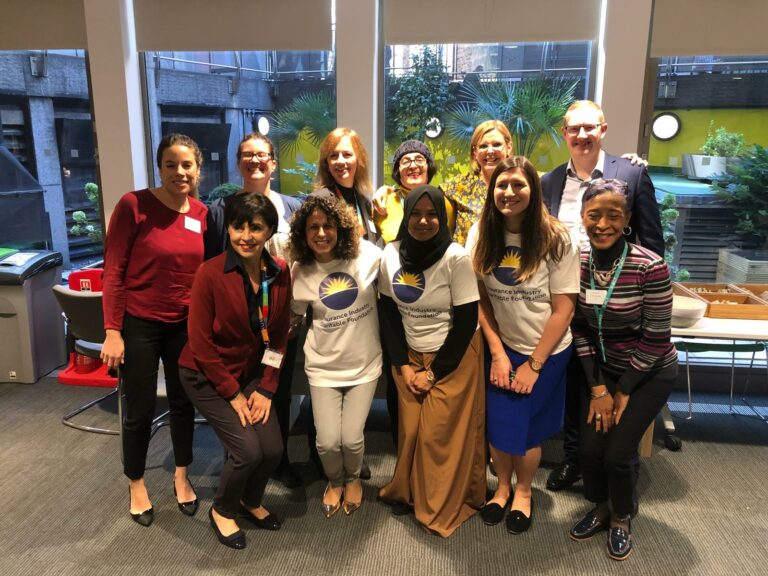Could harnessing the cloud reduce CO2 emissions by 59 million tons per year?
Since the early days of the digital movement, technology advancements have revolutionized work environments to achieve more efficient and profitable organizations. We now see business leaders moving beyond the bottom line, using technology to create environmentally favorable operations.
This is true for global payments, where some of the earliest digitization efforts focused on automating simple manual tasks. In doing so, businesses were able to eliminate paper-based processes to consume fewer environmental resources.
As the digital movement exploded, process automation grew to encompass entire workflows, streamlining operations while also reducing waste and improving the environmental impact. For instance, businesses could initially scan an invoice into software to reduce the need for data entry, but advancing technology soon made it possible to send invoices electronically, automatically extract and store information, and even pay vendors without the need for paper documents or payments.
As businesses began to lessen their environmental impact through the use of technology, interest in conservation grew. According to an Accenture CEO study on sustainability, 44% of CEO respondents are now working toward a net-zero future for their organization.[i] For many, technology will lead the way toward a greener future, particularly as cloud technologies make it easier to adopt cutting-edge advancements in payments technology. Gartner predicts that spending on cloud technologies will have grown over 23% in 2021[ii] and that 75% of all databases will be deployed in or migrated to the cloud in 2022.[iii]
Making greener payments in the cloud
In order to understand all of the hype around cloud technology, it’s necessary to introduce some of the basics.
Quite simply, the cloud is an off-premise location where organizations can store data, facilitate transactions or even consume software applications provided by external vendors. The magic of the cloud occurs from a very real-world technology called application programming interfaces (APIs).
APIs act as a connection layer, providing users with a single point of entry to the available functionality on the cloud. So, whether you’re accessing your own stored data, utilizing that data to fuel third-party applications or connecting to other users on the platform, it’s possible to enable all workflows from a single portal.
We can see the impact of cloud in recent payments innovations. Vitesse, for instance, makes it possible for organizations to send and receive payments via a global domestic partner network. Communication with and movement of payments through the network occurs in the cloud, allowing businesses to more seamlessly transfer money, with payments made in local currencies.
However, while cloud technologies are streamlining processes and offering definite financial benefits to business organizations, such as a 30-40% decrease in total cost of ownership,[iv] the cloud is also good for the environment, potentially reducing CO2 emissions by as much as 59 million tons per year.[v] That’s the equivalent of taking 22 million vehicles off the roads.[vi]
The environmentally friendly aspect of cloud technology occurs by capitalizing on the economies of scale. Not only do cloud centers utilize far fewer servers than you would require to run your on-premise applications, they’re now doing so in a far more efficient manner:
- Cloud data centers can be positioned closer to the facilities from which they draw power, preventing power losses associated with long-haul transmissions and reducing overall usage.
- On-premise software is designed to handle high-intensity usage spikes. However, much of the time, systems sit idle, utilizing high levels of energy. Cloud servers, on the other hand, have higher utilization rates, meaning very little downtime and more efficient energy usage.
- Because cloud centers are typically engineered to use energy more efficiently than most on-premise applications, they can operate with less of an environmental footprint. One recent study determined that the energy required to run business email, as well as productivity and CRM software, could be reduced by as much as 87% if all business users moved these applications to the cloud.[vii]
In addition to the energy savings already available through the cloud, providers continue to invest in newer and more environmentally friendly technologies to reduce the environmental impact. Google, one of the largest cloud providers, has been carbon neutral since 2007 and intends to run all of the company’s data centers and offices on carbon-free energy by the year 2030.[viii] Likewise, Amazon has exceeded 50% of renewable energy usage and has recently invested in new wind farms located around the world.[ix] https://earth.org/environmental-impact-of-cloud-computing/
Business organizations can more easily improve their own environmental accountability by moving processes, such as payments, to the cloud, while boosting internal efficiency and turnaround times for equal bottom line results.
Catch the article on IBS Intelligence here.
[i] Peter Lacy. “The Green Behind the Cloud.” Accenture, Sep. 22, 2020. Web.
[ii] “Gartner Forecasts Worldwide Public Cloud End-User Spending to Grow 23% in 2021.” Gartner, Apr. 21, 2021. Web.
[iii] “Gartner Says the Future of the Database Market Is the Cloud.” Garnter, Jul. 1, 2019. Web.
[iv] Peter Lacy. “The Green Behind the Cloud.” Accenture, Sep. 22, 2020. Web.
[v] Peter Lacy. “The Green Behind the Cloud.” Accenture, Sep. 22, 2020. Web.
[vi] Peter Lacy. “The Green Behind the Cloud.” Accenture, Sep. 22, 2020. Web.
[vii] Eric Masanet, et al. “The Energy Efficiency Potential of Cloud-Based Software.” Berkeley Lab, Jun. 2013. Web.
[viii] “Google Says Its Carbon Footprint Is Now Zero.” BBC. BBC News Services, Sep. 14, 2020. Web.
[ix] Adele Beardmore. “Uncovering the Environmental Impact of Cloud Computing.” Earth.org, Oct. 12, 2020. Web.








